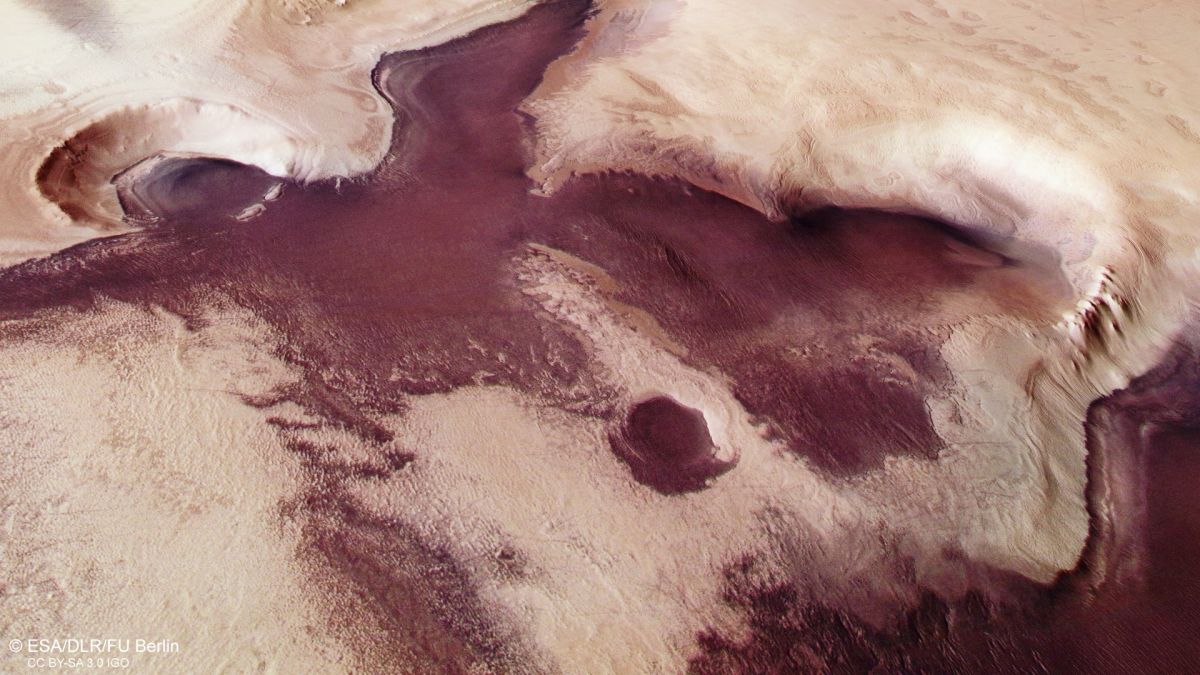

With a little imagination, this view of the South Pole of Mars from ESA Mars Express shows an angel and a heart together.
Photo: ESA / DLR / FU Berlin, CC BY-SA 3.0 IGO / Courtesy
The silhouettes captured by the probe Mars Express of the European Space Agency (ESA) of an angelic figure, with its halo included, are distinguished by clipping at the top of the image created by the Mars Express High Resolution Stereo Camera (HRSC), as well the photo of a big heart located right in the center.
These shapes seem to contrast with the brown (or, if we want to continue with the Christmas equation, lawyer color) background of the surface of Mars.
The dark color is the result of the composition of the dune areas in the area, mainly formed of dark colored sand, rich in rock-constituent minerals that can also be found on earth (in particular pyroxene and olivine).
This ethereal scene is in the southern polar region of Mars, although the pole as such would be out of view, just to the right (southbound), the EA said in a statement Thursday.

The South Pole of Mars It is usually covered with a layer of ice 1.5 km thick and about 400 km long, with a volume of about 1.6 million cubic kilometers, of which just over 12% is water ice. The rest of the polar cap consists mainly of dry ice (solid carbon dioxide), which freezes in the atmosphere in the winter and then sublimes (changes from a solid to a gaseous state) in the summer.
Since the southern hemisphere of Mars is currently in summer, this image shows how the ice at the planet’s south pole has the lowest annual level.
The “angel” and the “heart” are made up of different interesting formations.
First, the angel’s hand extending to the left can be a large sublimation trench, formed when ice turns to gas, leaving hollows and hollows on the planet’s surface – a process that often occurs in the changing seasons. . These sublimation wells have been seen on other planets in the solar system, such as Pluto, and are also seen on the ground right.
“The ‘head’ and halo are formed by an impact crater created when a body flew in from space to collide with the crust of Mars,” said ESA. This impact has left several layers of deposits, look below the surface.
Fine scratchy spots on the surrounding landscape are telltale signs of dust on the windy planet.
The science is fascinating and the imaginative interpretation of the ESA shapes is a fitting way to celebrate the holidays.